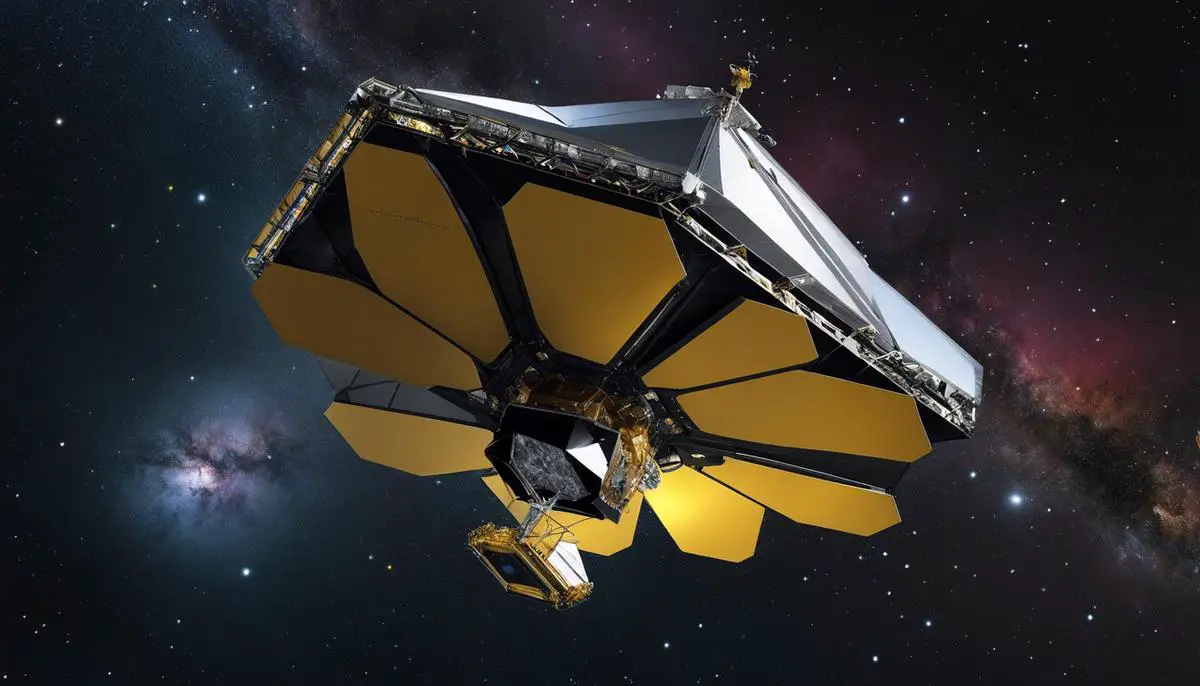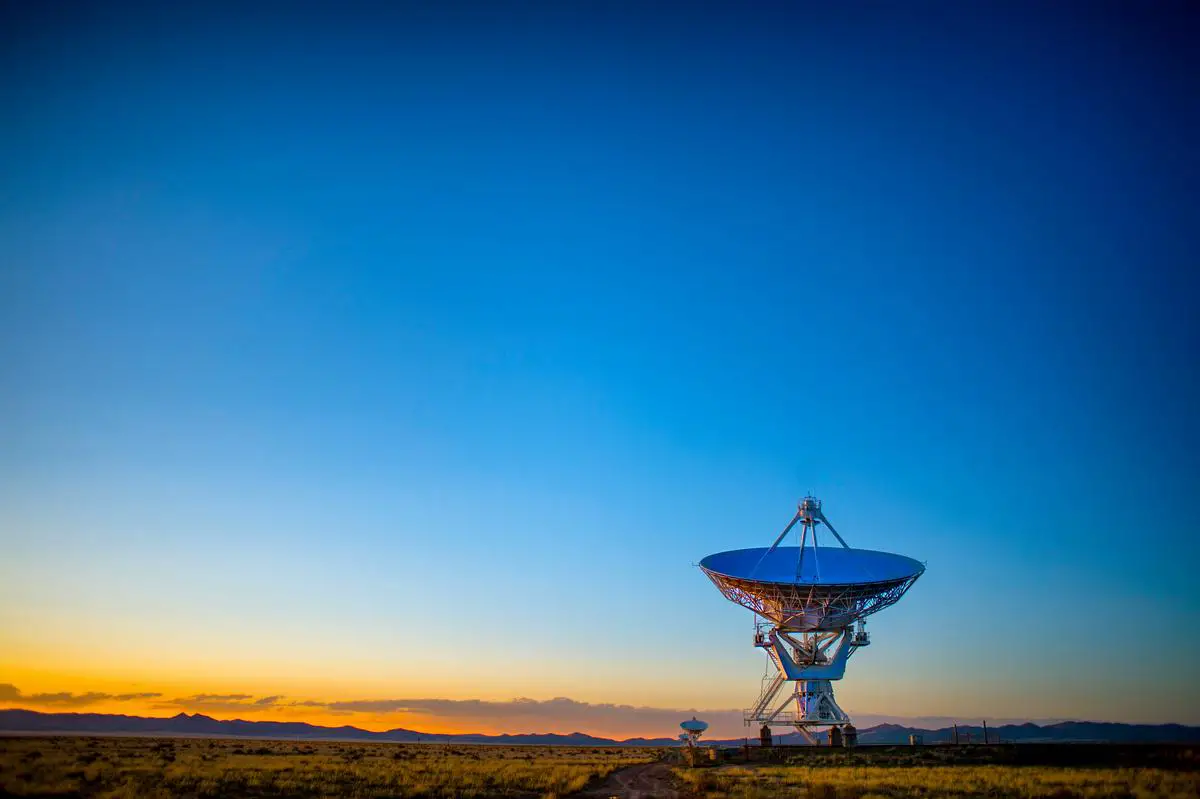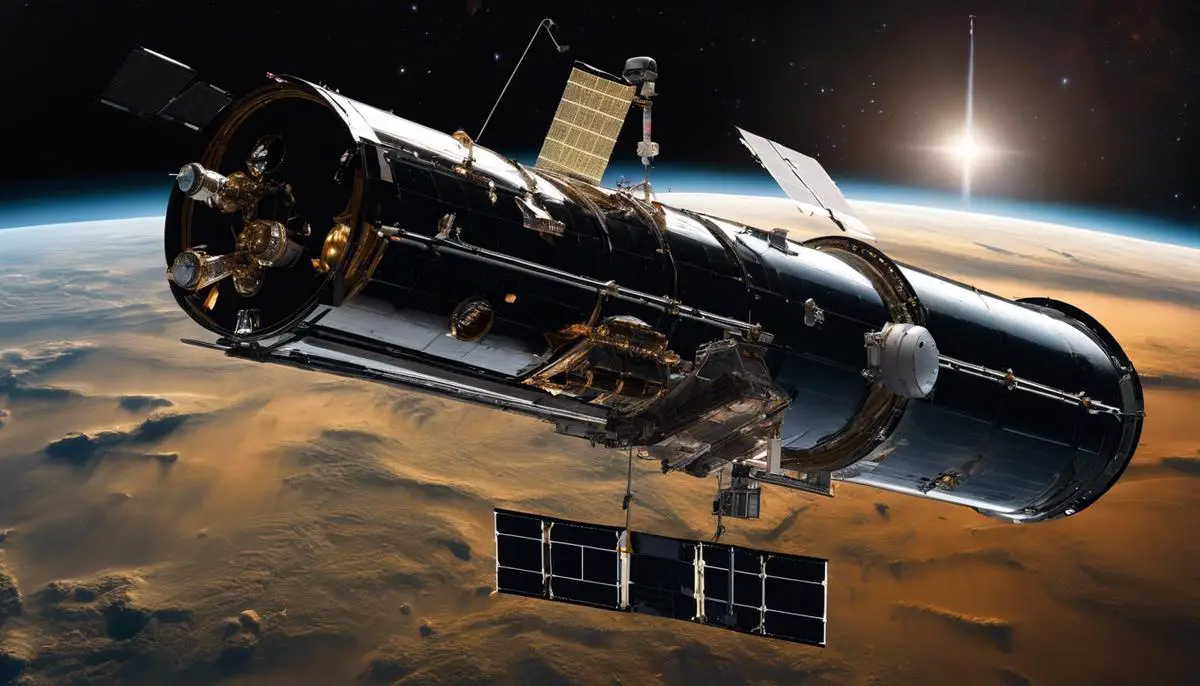In our quest to unravel the vast mysteries of the cosmos, humankind has engineered marvels that extend our sight beyond the confines of our pale blue dot. The telescopes we’ve erected—on desolate mountaintops and in the cold vacuum of space—are not mere instruments; they are portals to the distant reaches of time and space. Among these, some stand out for their extraordinary optics and their ability to bring the universe into sharp focus. In this exploration, we shall delve into the top ten telescopes, heralded for their unparalleled vision and contributions to our understanding of the universe. Each of these giants, from the enduring legacy of the Hubble Space Telescope to the transformative potential of the James Webb Space Telescope and the remarkable capabilities of the Very Large Telescope, have peeled back layers of cosmic mystery, fundamentally reshaping our comprehension of the cosmos.
Hubble Space Telescope
Unlocking Cosmic Mysteries: The Hubble Space Telescope’s Revolutionary Impact
Since its launch in 1990, the Hubble Space Telescope has reshaped every aspect of astronomy, acting as humanity’s eye into the depths of space. Its images are not only visually stunning but have repeatedly overturned longstanding theories about the cosmos.
The telescope’s unparalleled view of the universe has led to the discovery of over 3,000 exoplanets. This vastly expands the potential for finding other habitable worlds and understanding the diversity of planetary systems.
Hubble’s deep field images have offered a glimpse into the early universe, peering back nearly to the Big Bang. These observations have assisted in pinning down the age of the universe at about 13.8 billion years with far greater precision than ever before.
By studying phenomena like supernovas and variable stars, Hubble has refined measurements of the expansion rate of the universe, known as the Hubble constant. However, it has also given rise to new puzzles, such as the tension between measurements taken locally and those from the early universe.
Through observations of the rate of expansion, Hubble has contributed to the revolutionary concept that the universe is not just expanding, but doing so at an accelerating pace. This finding implies the existence of a mysterious force called dark energy, which constitutes about 68% of the universe.
Hubble has also scrutinized the behaviors of black holes and provided definitive evidence of their existence. The imagery captured by Hubble has shown jets and disks of matter around these enigmatic cosmic features.
Saturn’s auroras, Pluto’s waning atmosphere, and the disintegration of comets—these are just a few examples of how the Hubble has extended its gaze into corners of the solar system, enhancing the knowledge about our celestial neighbors.
Lastly, Hubble’s continuous upgrades and repairs have served as a valuable testbed for developing the technologies and operational procedures used in future long-duration space missions. It remains a testament to human ambition and ingenuity in the quest to understand the universe.

James Webb Space Telescope (JWST)
Unlocking the Cosmos with the James Webb Space Telescope: A Glimpse into New Frontiers
Temperatures of Distant Worlds
The James Webb Space Telescope (JWST) takes exoplanet research to new heights with its ability to determine the precise temperatures of distant planets. Equipped with state-of-the-art infrared technology, JWST can analyze the thermal emission from these worlds, providing insight into their atmospheric conditions and potential habitability. This leap in detail affords astronomers a closer look at how these celestial bodies interact with their parent stars and their climatic patterns.
Spectroscopy Breakthroughs
Spectroscopy, the study of the interaction between matter and electromagnetic radiation, undergoes a radical transformation thanks to JWST. The telescope’s sophisticated instruments enable astronomers to dissect the faint light of the most remote galaxies. By reading the cosmic signatures left by elements and molecules in this light, researchers will map out the chemical compositions of celestial objects, offering a whole new understanding of the building blocks of the universe.
Time Travel Through Light
Light takes time to travel across the vastness of space, so when observing distant galaxies, JWST essentially looks back in time. With its powerful mirrors and advanced optics, the telescope captures light from the earliest epochs of the universe. These observations push the boundaries of cosmic archaeology, revealing the formation of the first stars and galaxies and illuminating the evolution of cosmic structures over billions of years.
Evolution of Stars and Planetary Systems
Through its keen eyes, JWST chronicles the life cycle of stars, from their tumultuous birth in nebulae to their final death throes. It peers into the dusty cocoons where new stars are kindling and tracks the dispersal of elements necessary for life as stars end their lives. On a grander scale, JWST offers a window into the processes that govern the development of planetary systems, governing our understanding of the universe’s complexity and diversity.
Cosmic Weather Forecasting
Beyond the solar system’s edge, JWST revolutionizes the prediction of ‘cosmic weather’. By studying protoplanetary disks—regions around young stars where planets form—the telescope observes the birth of weather systems that could affect planetary formation and evolution. These disks are cradles for future Earths, and JWST’s insights are key to comprehending planetary diversity.
Revelations in Cosmic Magnetism
JWST extends its gaze to the often-overlooked realm of cosmic magnetism. Magnetic fields, though invisible, play a significant role in how galaxies and interstellar clouds behave. By examining the polarization of light—how it is affected by magnetic fields—JWST helps astronomers map these invisible forces. These maps are essential for unraveling the magnetic influence on star formation and galactic evolution.
Enigma of Cosmic Reionization
Finally, JWST tackles one of astronomy’s great puzzles: cosmic reionization. This epoch saw the first light sources ionize hydrogen atoms, allowing light to travel freely through the universe. Understanding reionization uncovers the conditions that allowed the universe to emerge from its opaque infancy into the clarity of the cosmic landscape we see today. JWST’s peek into this mystical era shapes our knowledge of the young universe’s nature and properties.
By equipping the astronomical community with these groundbreaking tools, the James Webb Space Telescope not only extends the legacies of its predecessors but also charts a course for explorations that were once the domain of science fiction. Each new revelation serves as a reminder of the vast, uncharted wonders awaiting discovery in the infinite tapestry of the cosmos.

Very Large Telescope (VLT)
Exploring Uncharted Cosmic Territories with the Very Large Telescope’s Optics
Seizing the Power of Adaptive Optics for Razor-Sharp Stellar Images
Astronomers worldwide turn to the Very Large Telescope (VLT) for its adaptive optics system, a marvel of engineering that compensates for atmospheric turbulence. This system delivers images so crisp they rival those captured by space-based telescopes, peering into the cosmos with unparalleled clarity.
Zooming In on Distant Galaxies with Advanced Interferometry
The VLT isn’t just a singular telescope; it’s a symphony of four Unit Telescopes using interferometry to work in concert. This technique combines the light from multiple telescopes to create a virtual mirror as large as the array itself, magnifying our celestial insights to unprecedented levels.
Laser Guide Stars Lighting the Path to Discovery
When natural guide stars aren’t available, the VLT employs its laser guide star facility. Bright, artificial stars are projected into the upper atmosphere, serving as fixed points to refine its adaptive optics. By locking onto these lasers, the VLT optimizes its vision, pushing the boundaries of astronomical observations.
Sweeping the Skies with Wide-Field Views
The VLT’s wide-field cameras, like the aptly named Wide Field Imager, offer an extensive view of the heavens, allowing it to survey large swathes of the sky. This capability is essential for detecting elusive, transient objects and mapping the vast tapestry of the night sky in painstaking detail.
Unveiling the Cosmos at Infrared Frequencies
One key to the VLT’s success is its prowess in infrared astronomy. By observing infrared light, the VLT can penetrate cosmic dust clouds that obscure other telescopes’ views. It reveals the hidden workshops where stars are born and uncovers the secrets of the most cold and distant celestial objects.
Harnessing High-Resolution Spectroscopy to Decode Celestial Mysteries
Equipped with cutting-edge spectrographs, the VLT dissects the light from celestial sources into its component colors. This reveals the chemical composition, temperature, and movement of planets, stars, and galaxies, and has been pivotal in confirming the existence of planets around other stars, or exoplanets.
Tailoring Telescopic Power with Modular Instrumentation
Flexibility is at the core of the VLT’s design. Its modular instruments can be swapped and upgraded, ensuring it stays on the technology’s bleeding edge. This adaptability allows it to tackle new scientific questions and keeps it at the forefront of discovery, today and into the future.
Nestled in the Atacama Desert’s Pristine Skies
Location is everything, and the VLT’s home at the Paranal Observatory in Chile offers some of Earth’s clearest skies. Ideal atmospheric conditions combined with minimal light pollution create the perfect setting for the VLT’s suite of instruments to pierce the celestial veil.
By forging a gateway to the universe with unprecedented visual acuity, the VLT—and its array of optical innovations—continues to aid humanity in unravelling the cosmos’ deepest mysteries, igniting the imagination of scientists and sky gazers alike. With eyes set on the stars, it stands as a testament to the boundless pursuit of knowledge, anchored on terra firma but reaching into the infinite.

As we gaze into the night sky, we now understand that the twinkling lights are but a gateway to a universe teeming with wonder, a cosmos that advanced telescopes unlock for our insatiable curiosity. The achievements of these instruments—the top ten telescopes with the best optics—represent the collective pinnacle of human ingenuity and our enduring quest to comprehend our place amongst the stars. They have not only magnified our vision but have also expanded our understanding, narrating a story of cosmic evolution that continues to unfold across the expanse of time and space. May the legacy of these telescopes continue to inspire future generations to look upward and explore the unfathomable depths of the universe that awaits.
![]()
